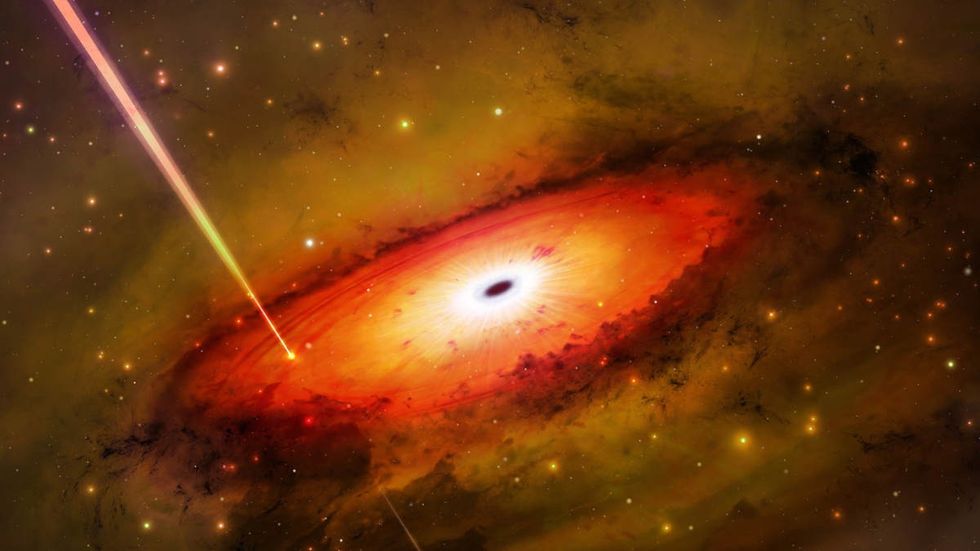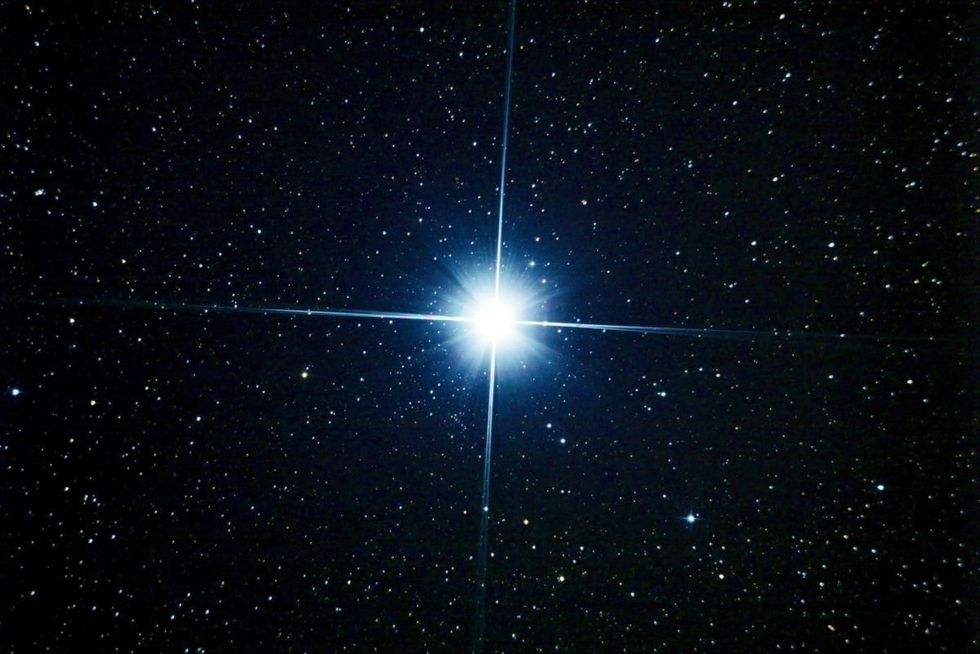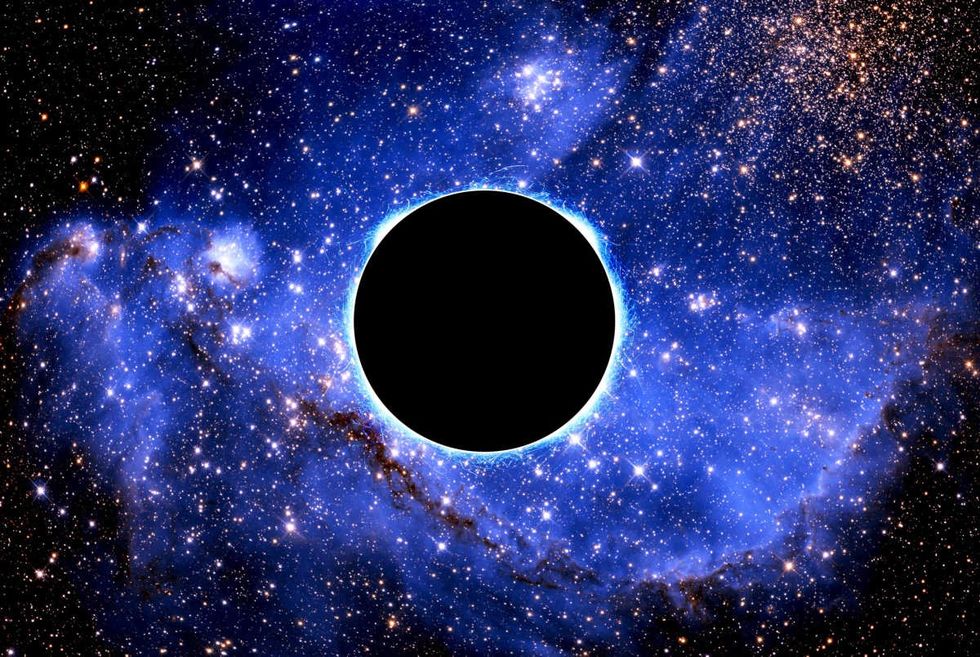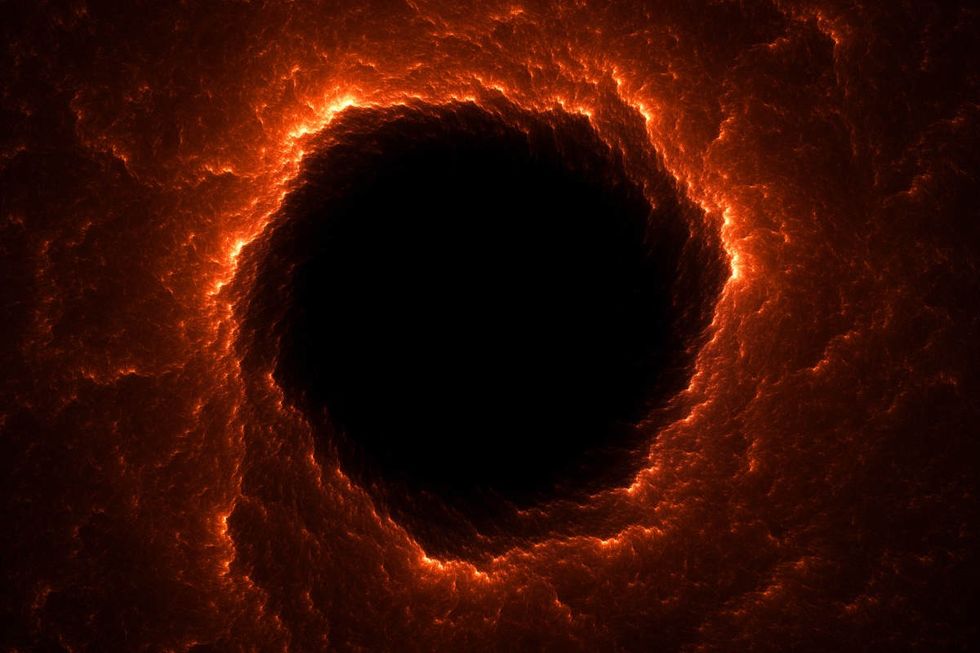Every galaxy is an intelligent cosmic entity that hosts its unique collection of celestial objects. One of these objects cataloged in the notebooks of astronomers is “quasars.” Quasars are exceptionally luminous cores of galaxies powered by supermassive black holes that feed on enormous quantities of gases and dust. In a study published in the journal Nature Astronomy, in January 2024, researchers reported detecting a quasar in a distant galaxy. Stitched into a tapestry of diamond-like stars, this quasar is powered by a black hole 17 billion times heavier than our solar system’s Sun. Located 12 billion light-years away, this humongous black hole is so hungry that it gobbles up one Sun each day.

Also known as “active galactic nuclei," or AGN, “quasars” are hearts of galaxies that host supermassive black holes that feed on the material accumulated around their rims, called “accretion disks,” per Space. The gravity of these voids is so strong that the dust and gas accumulated in this disk rapidly heat up and illuminate into a super-bright glow. While some of the matter is digested into the black hole’s abysmal belly, the remaining matter, when piled up at the disk, is blasted off into space as a jet of high-speed light-emitting particles. This collective light forms the essence of brilliantly glowing quasars. But this quasar, dubbed “J0529-4351,” has shattered all records. The intensity of its brightness is unmatchable like never seen before. On an estimate, J0529-4351 is “500 trillion times brighter than the Milky Way’s Sun.”
"We have discovered an object which has previously not been recognized for what it is; it's been staring into our eyes for many years because it's been glowing at its brightness for longer than humankind has probably existed. But we've now recognized it, not as being one of the many foreground stars in our Milky Way but as a very distant object," Christian Wolf, from the Australian National University (ANU), told BBC News.

This colossal black hole was first identified with the help of a 2.3-meter telescope at the ANU Siding Spring Observatory, according to an ANU press release. Following that discovery, researchers approached one of the largest telescopes in the world, the European Southern Observatory’s Very Large Telescope to delve deeper into the nature of this black hole which seemingly displays a voracious appetite.

“It looks like a gigantic and magnetic storm cell with temperatures of 10,000 degrees Celsius, lightning everywhere and winds blowing so fast they would go around Earth in a second,” said Wolf in the press release. Adding to this, Rachel Webster from the University of Melbourne, told BBC News, "What is unusual is the rate at which it's digesting other material; you know, swallowing mass. And that's at the rate of about one Sun - one solar mass - per day, which is an enormous rate. And that makes it very, very luminous."

Reflecting on the correlation between galaxies and black holes, ANU PhD student and co-author Samuel Lai, told BBC News that it could be possible that black holes are quintessential to the formation of galaxies. "In simple language, it means that without these black holes, our galaxy as we know it wouldn't be what it is today. In fact, all galaxies would be very different without their supermassive black holes. It may even be possible that all galaxies form around these supermassive black holes.” Yet, just like the inner voids of the black holes, the workings of black holes remain a mystery.





































 A pair of scissors.
A pair of scissors. A can opener opening a tin can.
A can opener opening a tin can. Jimi Hendrix playing on stage.Public Domain
Jimi Hendrix playing on stage.Public Domain A man handing over $20 in cash.
A man handing over $20 in cash. A person using a power saw.
A person using a power saw.
 Rock deterioration has damaged some of the inscriptions, but they remain visible. Renan Rodrigues Chandu and Pedro Arcanjo José Feitosa, and the Casa Grande boys
Rock deterioration has damaged some of the inscriptions, but they remain visible. Renan Rodrigues Chandu and Pedro Arcanjo José Feitosa, and the Casa Grande boys The Serrote do Letreiro site continues to provide rich insights into ancient life.
The Serrote do Letreiro site continues to provide rich insights into ancient life.




 Music isn't just good for social bonding.Photo credit: Canva
Music isn't just good for social bonding.Photo credit: Canva Our genes may influence our love of music more than we realize.Photo credit: Canva
Our genes may influence our love of music more than we realize.Photo credit: Canva